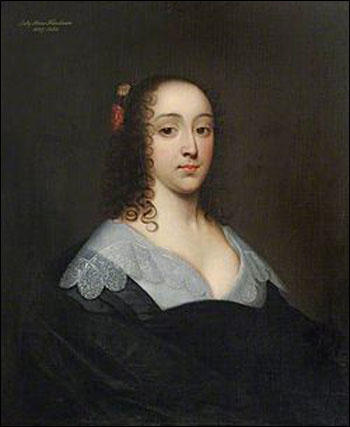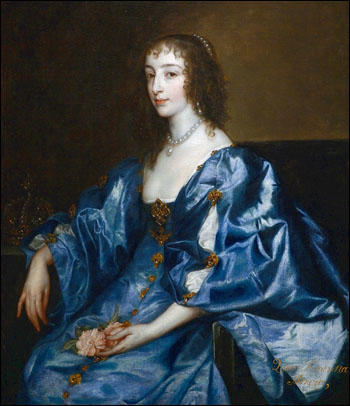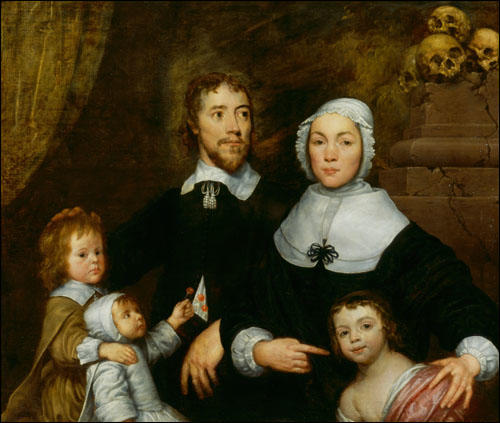Classroom Activity : Women in the English Civil War
In 1625 Henrietta Maria married Charles I. As she was a Roman Catholic, this marriage was not very popular with the English people. The Puritans were particularly unhappy when they heard that the king had promised that Henrietta Maria would be allowed to practise her religion freely and would have the responsibility for the upbringing of their children until they reached the age of thirteen.
The couple had six children. Sophia of Bavaria met Henrietta Maria in 1641. She later recalled: "I was surprised to find that the Queen, who looked so fine in the Van Dyck painting, was a small woman... with long skinny arms and teeth like defence works projecting from her mouth."
In 1642 Henrietta Maria fled to Holland where she raised funds for the Royalist Army. She wrote to Charles I on 23rd February, 1643: "All day we unloaded our ammunition... The cannon balls whistled over me; and as you can imagine I did not like the music... I went on foot some distance from the village, and got shelter in a ditch. But before I could reach it the balls sang merrily over our heads and a sergeant was killed twenty paces from me. Under this shelter we remained two hours, the bullets flying over us, and sometimes covering us with earth... by land and sea I have been in some danger, but God has preserved me."
Lucy Hutchinson was married to John Hutchinson, a large landowner in Nottingham. During the English Civil War John was an officer in the Parliamentary Army, whereas Lucy worked as a nurse.
On the Restoration John Hutchinson was arrested as he had signed the death warrant of Charles I. He died in prison in 1664. Lucy Hutchinson wrote her account of the Civil War and a biography of her husband entitled, Memoirs of the Life of Colonel Hutchinson, in about 1670, but it was too critical of the monarchy to be published in her lifetime. In her book she praised the Levellers: "These good-hearted people wanted justice for the poor as well as the mighty... for this they were nicknamed the Levellers... these men were just and honest."
Primary Sources

(Source 2) In January 1644, Mary Springate heard that her husband, Sir William Springate, was suffering from camp fever. Although pregnant, Mary made the dangerous journey from London to Arundel.
It was about twelve at night when we arrived... Seeing me... he sprang up as if he would come out of his bed, saying, "Let me embrace you before I die. I am going to my God." He had been in bed for five days... The purple spots came out the day before... The fever was so violent and he so young and strong (he was 23), and his blood so hot they were forced to sit round the bed to keep him in. He died two days later.

(Source 4) Anne Fanshawe, a strong supporter of King Charles, lived in Oxford during the Civil War.
From the windows of our house I observed the sad spectacle of war... sometimes plague, sometimes sicknesses of other kind, by reason of so many people being packed together.
(Source 5) Lucy Hutchinson worked as a nurse looking after parliamentary soldiers during the Civil War. In her book on the war that she wrote in about 1670 she describes looking after soldiers during a battle in Nottingham.
In the encounter only five of our men were hurt... we dressed all their wounds with such success that they were all cured... Seeing three of the prisoners badly bleeding I dressed their wounds also... Captain Palmer came in and told me not to help the enemies of God. I replied, I had a duty to treat them as men, not as enemies.

(Source 7) Henrietta Maria, King Charles' wife, went to Holland to raise funds for the royalist army. On her journey back her ship was chased by four Parliamentary ships. On 23rd February, 1643, she wrote a letter to Charles about her experiences.
All day we unloaded our ammunition... The cannon balls whistled over me; and as you can imagine I did not like the music... I went on foot some distance from the village, and got shelter in a ditch. But before I could reach it the balls sang merrily over our heads and a sergeant was killed twenty paces from me. Under this shelter we remained two hours, the bullets flying over us, and sometimes covering us with earth... by land and sea I have been in some danger, but God has preserved me.
(Source 8) On 5 September, 1643, Susan Owen wrote a letter to her husband John who was serving in the parliamentary army. The letter was intercepted and was published in a Royalist newspaper.
I fear I will never see you again... I am afraid the Cavaliers will kill you... If I miscarry, you shall answer for it.... There is none of our neighbours with you that has a wife... Pity me for God's sake and come home.
Questions for Students
Question 1: Read the introduction and look at sources 1, 3 and 6. Select the painting that might not be an accurate representation of the individual concerned.
Question 2: Study source 5. Why was Captain Palmer angry with Lucy Hutchinson?
Question 3: Source 8 was written by the wife of a parliamentary soldier. However, it was published in a Royalist newspaper. Can you explain why?
Question 4: Study source 6. Why do you think the artist has painted the skulls piled up on a broken pedestal in the top right corner?
Question 5: Select information from these sources that help to explain the different reasons why so many people died during the Civil War.
Answer Commentary
A commentary on these questions can be found here
Download Activity
You can download this activity in a word document here
You can download the answers in a word document here
